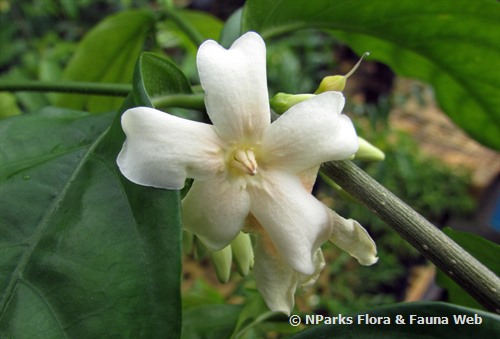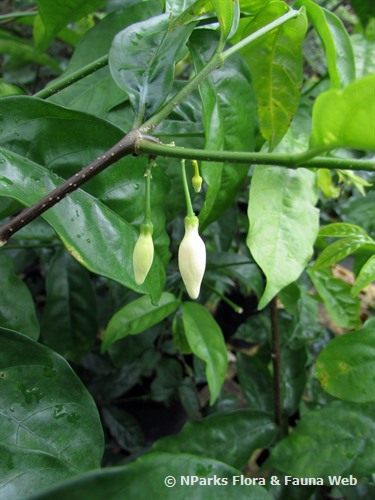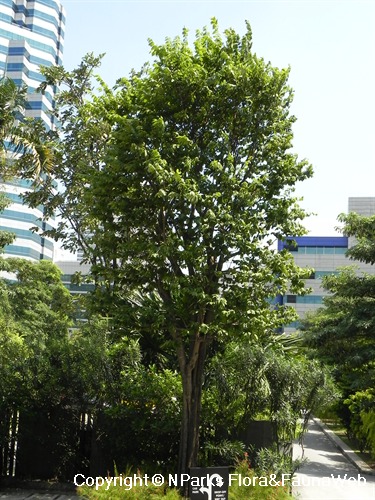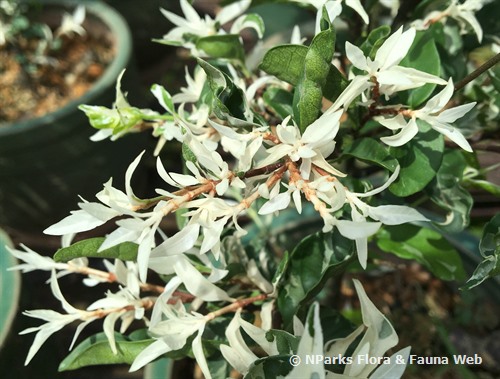
Name
Classifications and Characteristics
| Plant Growth Form | Shrub |
|---|
Biogeography
| Native Distribution | Thailand, Cambodia. |
|---|---|
| Native Habitat | Terrestrial |
| Preferred Climate Zone | Tropical |
Description and Ethnobotany
| Growth Form | A shrub to small tree, can grow up to 5 m tall. Most plant parts are puberulent. |
|---|---|
| Trunk | Bark is brown. |
| Foliage | Leaves are arranged oppositely along the stem; each leaf is 3 - 8 cm long by 2- 3.5 cm wide, oval to ovate shaped. |
| Stems | Older stems are lenticellate. |
| Flowers | Yellowish flowers are composed of 5 obovate petals, in umbel inflorescence, fragrant. |
| Habitat | Found in dry and evergreen forests. |
| Etymology | The genus Wrightia is named after Dr. William Wright, a Scottish physician and botanist. |
Landscaping Features
| Desirable Plant Features | Ornamental Flowers, Fragrant (Flowers) |
|---|---|
| Landscape Uses | Parks & Gardens, Small Gardens, Container Planting |
| Thematic Landscaping | Fragrant / Aromatherapy Garden |
Fauna, Pollination and Dispersal
| Pollination Method(s) | Biotic (Fauna) |
|---|
Plant Care and Propagation
| Light Preference | Full Sun |
|---|---|
| Water Preference | Moderate Water |
| Rootzone Tolerance | Moist Soils, Well-Drained Soils, Fertile Loamy Soils |
| Propagation Method | Seed, Stem Cutting |
Foliar
| Foliage Retention | Evergreen |
|---|---|
| Mature Foliage Colour(s) | Green |
| Mature Foliage Texture(s) | Smooth |
| Prominent Young Flush Colour(s) | Green |
| Young Flush Texture(s) | Smooth |
| Foliar Type | Simple / Unifoliate |
| Foliar Arrangement Along Stem | Opposite |
| Foliar Attachment to Stem | Petiolate |
| Foliar Shape(s) | Non-Palm Foliage (Ovate, Oval) |
| Foliar Venation | Pinnate / Net |
| Foliar Margin | Entire - Wavy / Undulate |
Floral (Angiosperm)
| Flower & Plant Sexuality | Bisexual Flowers |
| Flower Colour(s) | Yellow / Golden |
|---|---|
| Flower Texture(s) | Smooth |
| Flower Grouping | Cluster / Inflorescence |
| Flower Location | Axillary |
| Individual Flower Shape | Tubular |
| Flowering Period | Free-Flowering |
Image Repository
Others
| Master ID | 33606 |
|---|---|
| Species ID | 8020 |
| Flora Disclaimer | The information in this website has been compiled from reliable sources, such as reference works on medicinal plants. It is not a substitute for medical advice or treatment and NParks does not purport to provide any medical advice. Readers should always consult his/her physician before using or consuming a plant for medicinal purposes. |




.jpg)
.jpg)